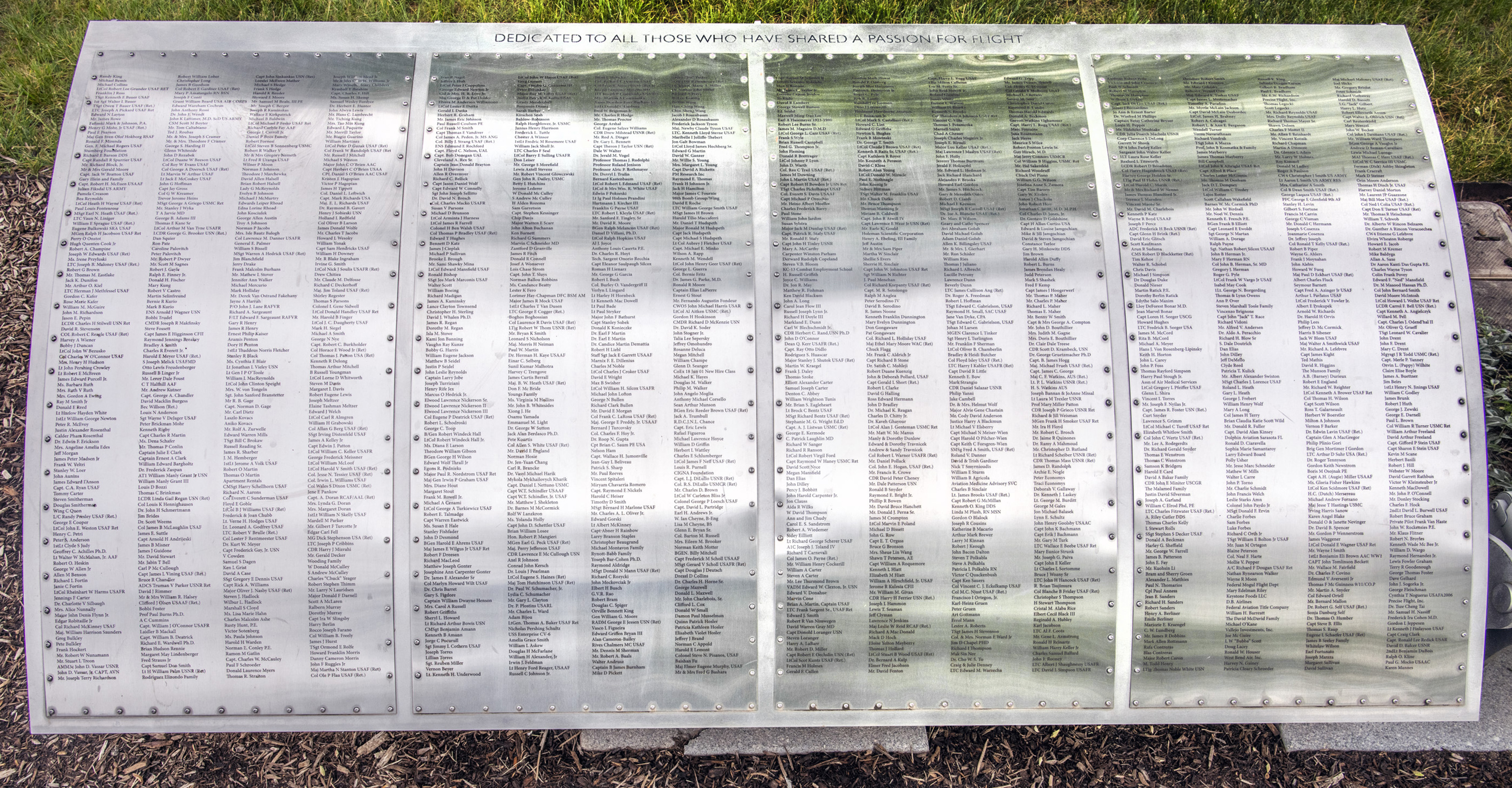Dr. Gary L. Bennett
Foil: 3 Panel: 2 Column: 3 Line: 16
Wall of Honor Level: Air and Space Friend
Honored by:
Dr. Bennett is a consultant in aerospace power and propulsion systems. Previously he was Manager of Advanced Space Propulsion Systems in the Transportation Division of the Office of Advanced Concepts and Technology at NASA Headquarters, Washington, D.C. until he took early retirement in 1994. At NASA Headquarters Dr. Bennett was responsible for managing a number of transportation technology programs including hybrid propulsion, electric propulsion, low-thrust chemical propulsion, and advanced propulsion concepts.
Dr. Bennett joined NASA Headquarters in June 1988 as the Manager of Advanced Space Power Systems. He was also responsible for managing the low-thrust space propulsion program and the advanced space propulsion concepts program. He also served as the program manager of NASA's nuclear propulsion technology program as well as being the first program manager of the advanced technology insertion program for the Pluto Fast Flyby (now Pluto Express) mission and the TIMED space physics mission. Prior to coming to NASA, Dr. Bennett held key positions in the Department of Energy's space radioisotope power program, including serving as Director of Safety and Nuclear Operations for the radioisotope power sources currently being used on the Galileo mission to Jupiter and on the Ulysses mission to explore the polar regions of the Sun.
Previous positions include Chief of the Research Support Branch in the U.S. Nuclear Regulatory Commission where Dr. Bennett was instrumental in creating and managing NRCs reactor operational safety research program. Prior to that Dr. Bennett was the flight safety manager for the radioisotope power sources currently in use on the Voyager 1 and 2 spacecraft and on Lincoln Laboratory's LES 8 and 9 communications satellites. He also worked as a physicist in the nuclear rocket program at what is now NASA's John H. Glenn Research Center at Lewis Field. He did fundamental reactor safety research at what is now the Department of Energy's Idaho National Engineering and Environmental Laboratory.
Dr. Bennett received a Ph.D. (physics) in 1970 from Washington State University; a Master of Nuclear Science degree (physics major; 1966) and a Bachelor of Science degree in physics (1962) from the University of Idaho; and an Associate of Arts degree (science major) in 1960 from what is now Boise State University. He is a member of the National Honor Society, Phi Theta Kappa honor society, Sigma Pi Sigma physics honor society, and Sigma Xi scientific research honor society. He has received a number of citations and awards from NASA, DOE, and NRC for his work on space and terrestrial power and space propulsion including for his work on the Voyager, Galileo, and Ulysses missions. In 1996 he received the prestigious Schreiber-Spence Space Achievement Award for his outstanding leadership of the safety and nuclear operations for the Galileo and Ulysses radioisotope power source programs. In 1995 he shared in the American Institute of Aeronautics and Astronautics Aerospace Power Systems Award and Medal for his outstanding leadership of the Ulysses radioisotope power source program. He received the Distinguished Alumnus Award from BSU in 1990 and the Silver & Gold Award, the highest award from the University of Idaho Alumni Association, in 1994. He has been elected a Fellow of the American Institute of Aeronautics and Astronautics, The American Physical Society, and the British Interplanetary Society. In the American Institute of Aeronautics and Astronautics he has served on the AIAA Technical Committees for Aerospace Power Systems, Electric Propulsion, and Space Science and Astronomy. He is also a member of the American Association for the Advancement of Science, American Astronautical Society, The Planetary Society, The National Space Society, and the American Association of Physics Teachers. From 1988 to 1990 he chaired the Steering Group of the Interagency Advanced Power Group, the national coordinating group for federally sponsored space and terrestrial power research. During his tenure and under his initiative the IAPG saw its greatest increase in membership. He is a member of the Power Committee of the International Astronautical Federation. From 1980 to 1988 he was a member of or adviser to U.S. delegations to the United Nations Committee on the Peaceful Uses of Outer Space and he prepared the official U.S. position papers on the use of nuclear power sources in space. He has authored or co-authored over 150 technical papers, reports, and articles on power, propulsion, and space missions. He has authored one book, The Star Sailors (St. Martin's Press, 1980), and contributed chapters to two other books (A Critical Review of Space Nuclear Power and Propulsion 1984-1993, American Institute of Physics, 1994 and CRC Handbook of Thermoelectrics, CRC Press, 1995).
Wall of Honor profiles are provided by the honoree or the donor who added their name to the Wall of Honor. The Museum cannot validate all facts contained in the profiles.
Foil: 3
All foil images coming soon.View other foils on our Wall of Honor Flickr Gallery
